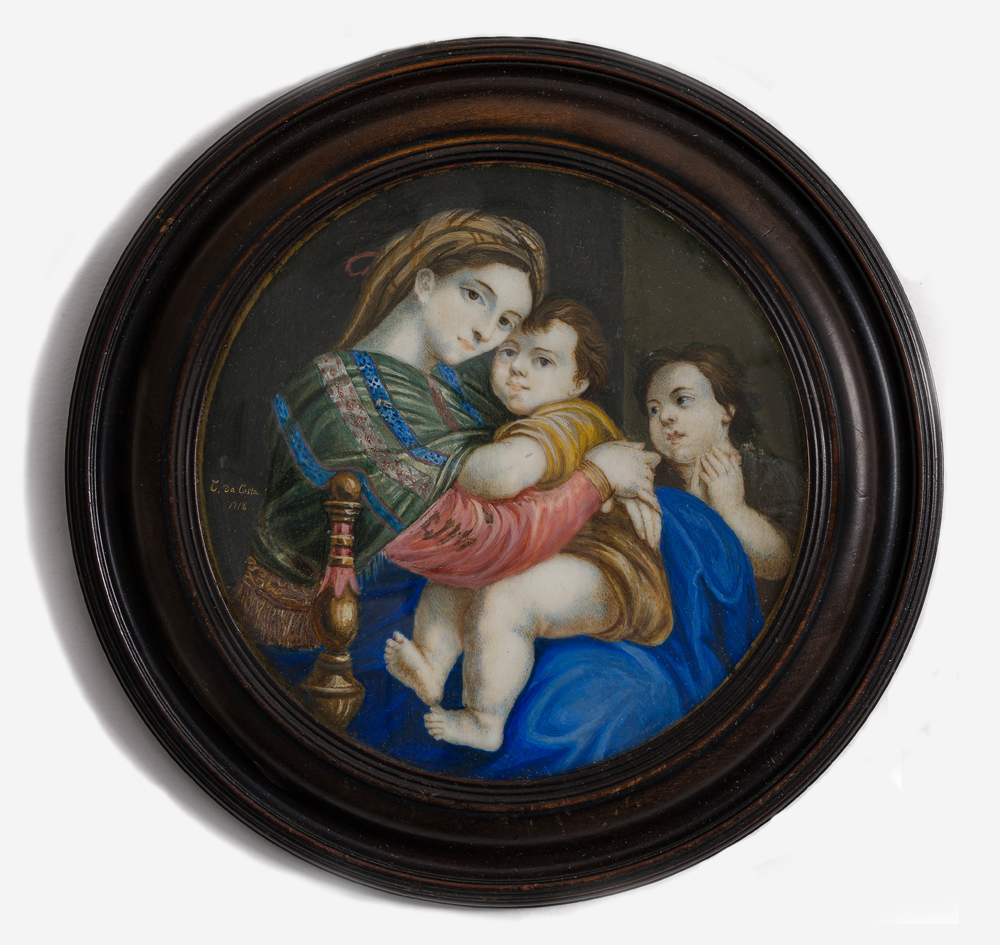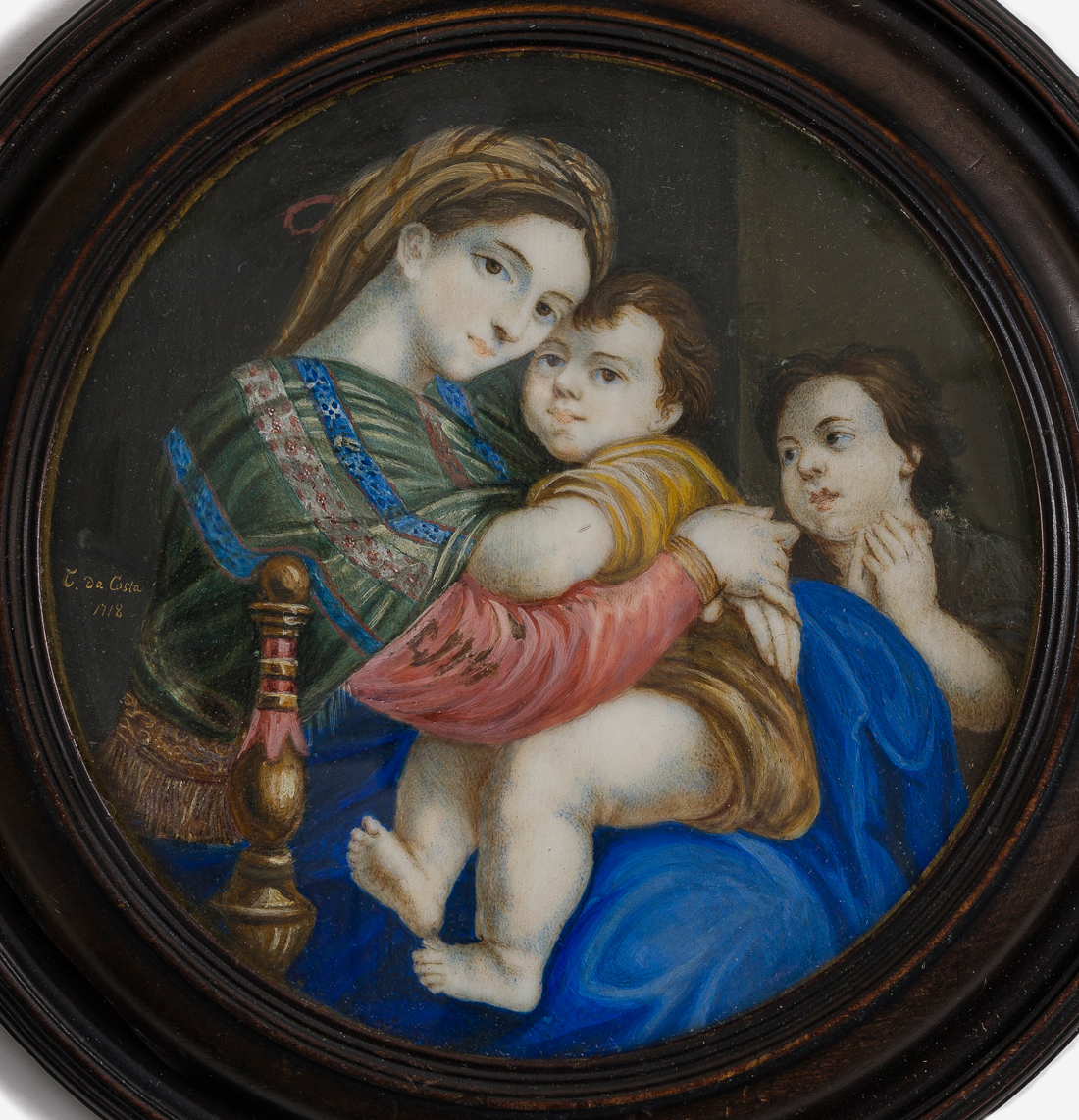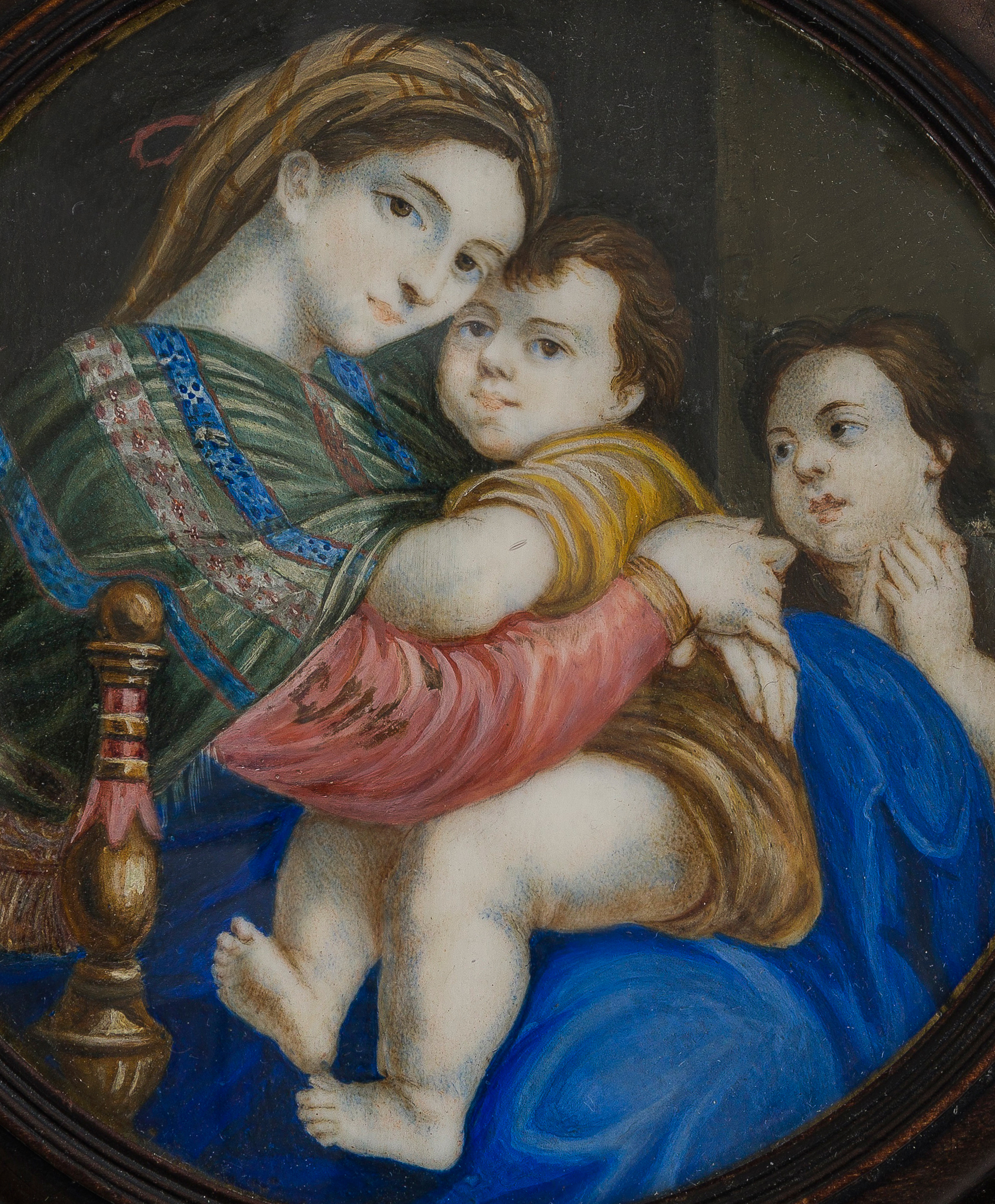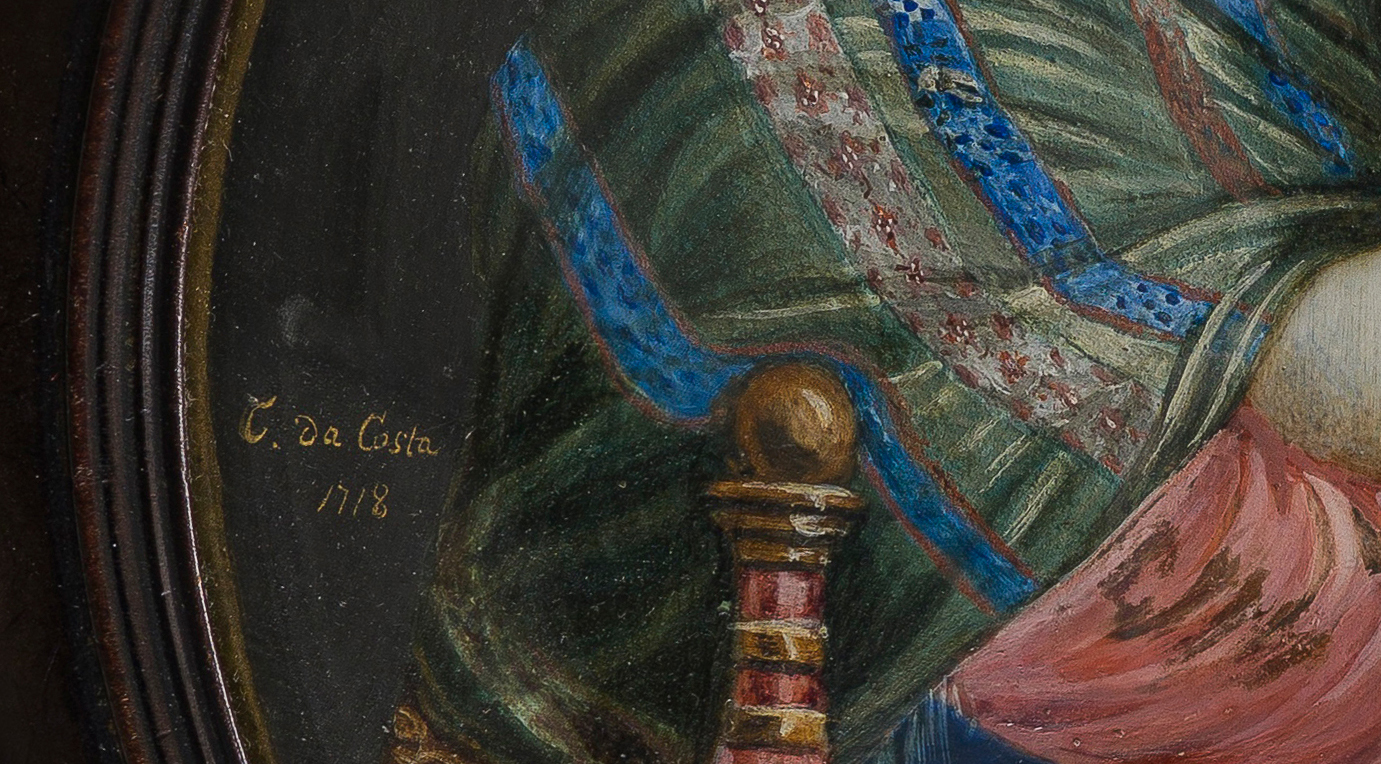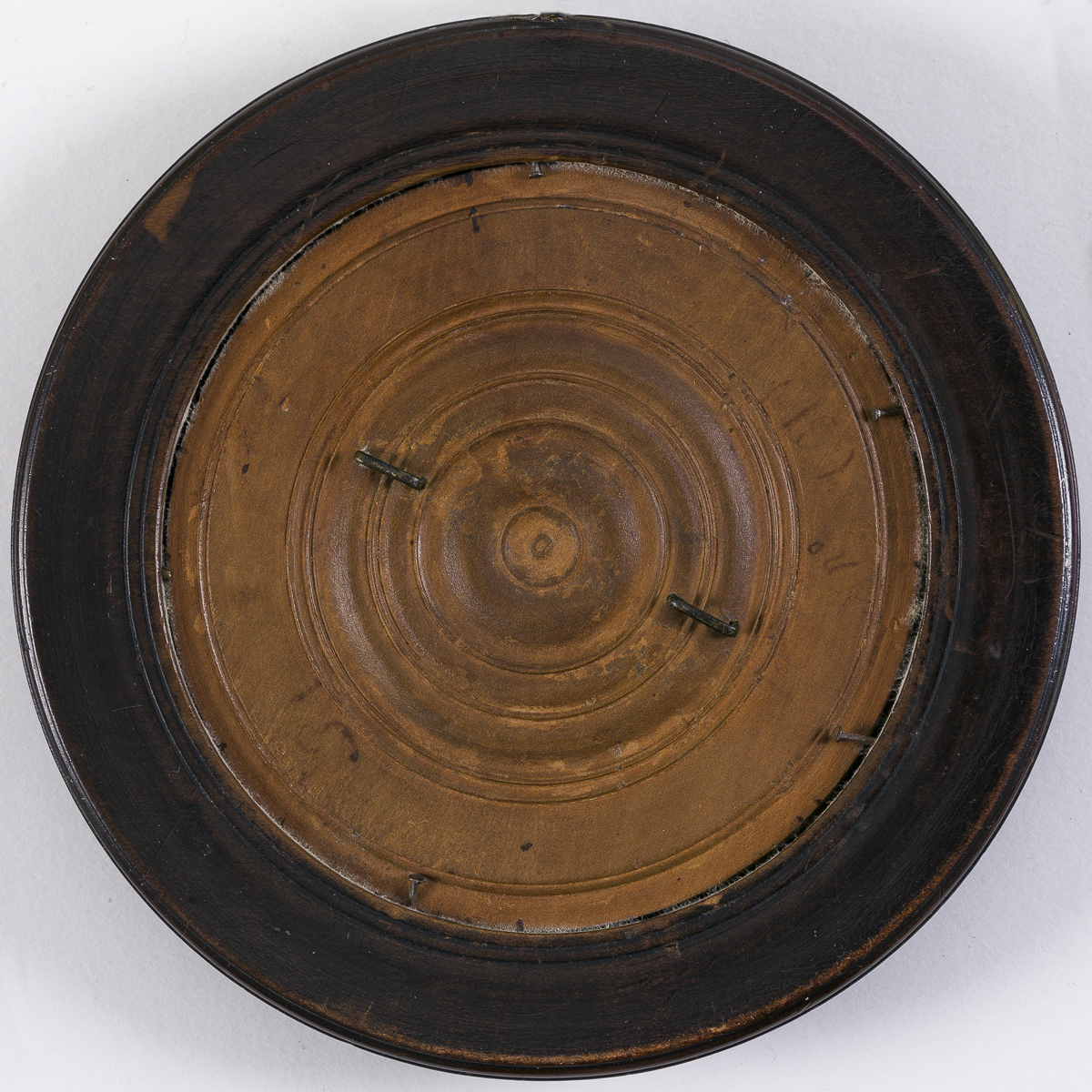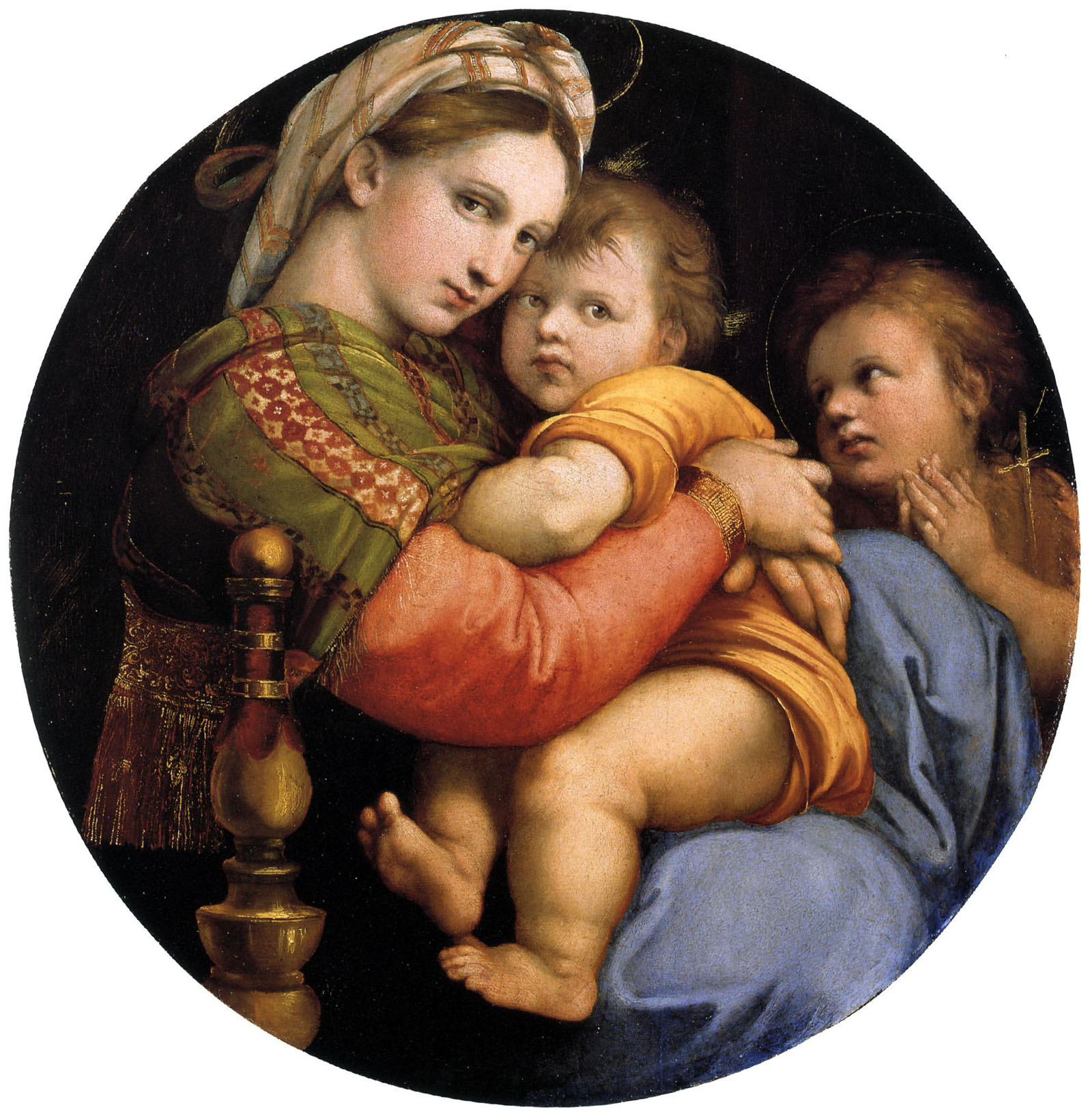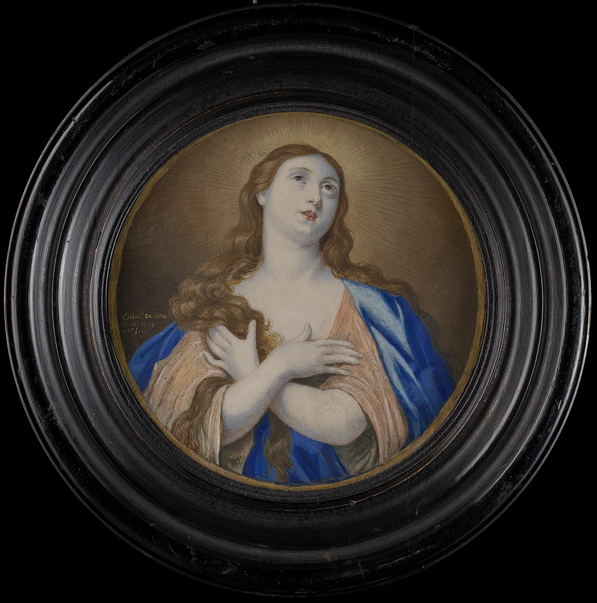CATHERINE DA COSTA, née MENDES (London 1668 – 1756 London)
Catherine da Costa, née Mendes (London 1679 – 1756 London)
Madonna della Seggiola, after Raphael
Watercolour and bodycolour on vellum, circular, diameter 100 mm (3.9 inch), in ebonised turned wood frame, diameter 138 mm (5.4 inch)
Signed and dated ‘C. da Costa / 1718’ (middle left)
Provenance
Private collection, The Netherlands
***
This miniature was painted by Catherine da Costa, the earliest known Anglo-Jewish artist and the first Jewish female artist whose work has survived.1 Da Costa was born at the royal residence of Somerset House, where she was named after her godmother, Catherine of Braganza, the Portuguese Queen Consort of Charles II.2 Her parents, both Portuguese Jews, fled the Spanish Inquisition and arrived in London, where Oliver Cromwell had allowed to be readmitted in 1656. Her father, Fernando, swiftly converted to Catholicism while he held the post as physician to Charles II and Queen Catherine. The Queen, who could not have children herself, is thought to have been particularly charmed with the little girl, and to have asked for her to be named after her. Later studying painting under renowned miniaturist Bernard Lens III (1682–1740),3 Da Costa even caught the attention of French philosopher Voltaire, an acquaintance of her husband, who witnessed an unavailing attempt by a priest to convert her to Christianity, attesting to her unwavering Jewish faith. In 1698 Catherine married her cousin Anthony Moses da Costa, a young merchant, and they had three children. Like his father, Anthony became a leading figure in the East India trade and in banking; he was also appointed commissioner for the new American colony of Georgia.
As a trained artist, she mainly gained commissions from her close circle of family and friends or from members of the Jewish community. Here, more unusually, she paints the figure Virgin Mary and Christ child, presumably painted as a specific commission. Taking into consideration Da Costa’s Judaism raises the question as to why this moving subject, deeply tied to Catholicism, is her chosen theme. In fact, da Costa’s Jewish identity lay in stark contrast with her vibrant cultural milieu in English society, where she was exposed to Old Testament themed oratorios and Enlightenment philosophers such as Hume and Locke. She would have also been mindful that Jewish identities were often concealed, and that intermarriage and conversion was embraced. After all, Da Costa’s father and her father-in-law both never confessed to being Jewish, with the former declaring himself a ‘Roman Catholic’ and the latter as being ‘Church of England’ following his adult baptism in 1672. Her painting thus provides fascinating testimony that her life was disparate to that of the average Jew in England, offering a nuanced understanding of the intricate times as a Jew, in which she lived.
The Madonna della Seggiola, also known as the Madonna della Sedia, is one of the most moving paintings by the great Renaissance artist Raphael (1483–1520). Executed around 1513-1514, it was owned by the Medici family by the sixteenth century and is now part of the Palazzo Pitti in Florence (fig.).4 It was known in England by painted and engraved copies; an early copy by Giovanni Battista Volpato (1633–1706) is preserved at Burton Constable Hall, Yorkshire.5
Emulating such a work also fits with Vertue’s description of her: ‘she Coppyd many pictures & limnings mostly all the remarkable of Faime in England painted by Rubens Vandyck & other masters’.6 The fact that Da Costa has carefully signed and dated the miniature suggests that this was an important commission for her.
Extant works by Da Costa are exceedingly rare. Our well preserved miniature can be compared to her Penitent Magdalen of 1714, after a composition by Guido Reni, formerly with Philip Mould, London (fig.).7 A miniature portrait of Alvaro Lopes Suasso (1696–1751) by Da Costa, also dated 1718, is preserved in the Jewish Historical Museum, Amsterdam (fig.).8
1. For the artist see Henry R. Lew, Smitten by Catherine, 2016.
2. Catherine was also given the Jewish name Rachel after her mother.
3. George Vertue’s observed that Lens’s pupil, Catherina da Costa: ‘learned to limne of Bernard Lens for many years.’ British Library, Add. MS 23079, fol. 26.
4. Oil on panel, diam. 71 cm, Palazzo Pitti, Florence.
5. Oil on canvas, 76.2 x 76.2 cm, inv. no. LDS396.
6. Vertue, op. cit., fol. 26
7. Miniature, circular, 110 mm diameter; this was formerly with Sotheby’s, London, 29 July 2020, lot 234, repr.
8. Miniature, 135 x 115, inv. no. JHM 03859.
